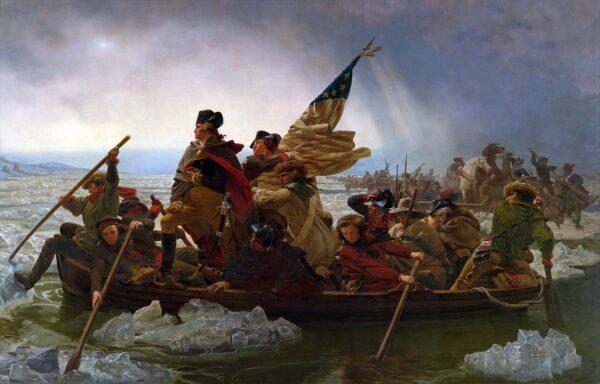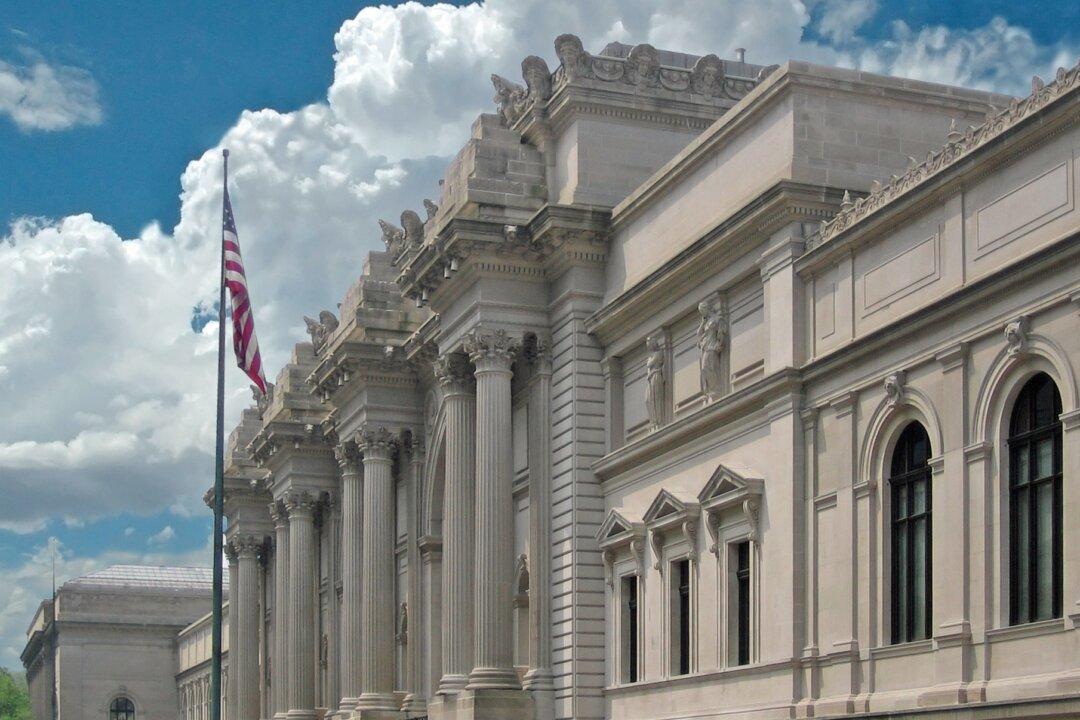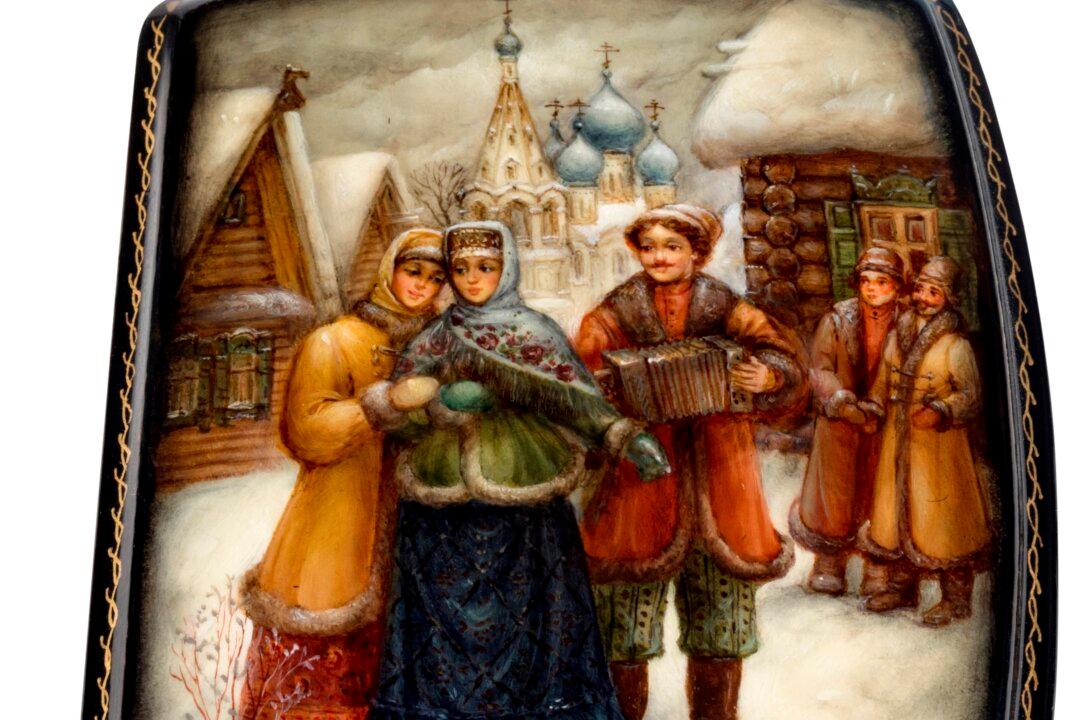On Christmas-day in seventy-six, Our ragged troops with bayonets fixed, For Trenton marched away. The Delaware see! the boats below! The light obscured by hail and snow! But no signs of dismay.
—“Battle of Trenton” by an anonymous 19th-century poet
“Washington Crossing the Delaware” hangs nobly in The Metropolitan Museum of Art. It illustrates General Washington’s voyage in Durham boats crossing the Delaware River to the Battle of Trenton on the night of Christ’s day of birth, Christmas 1776. This surprise attack was a major turning point in the Revolutionary War and became the general’s most celebrated victory.
“Washington Crossing the Delaware,” 1851, by Emanuel Leutze. The Metropolitan Museum of Art, New York. Public Domain





